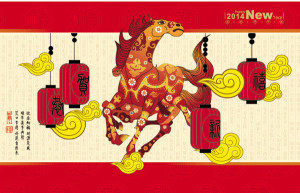The science behind Chinese New Year celebration practices
On this 4,712th year of the lunar calendar, we say goodbye to the Year of the Snake and bring in the Year of the Horse.
As per tradition, the Chinese New Year celebration consists of fire crackers, loud festivities, and displays of the colors red and gold everywhere. In addition to it just being fun to make noise and be colorful when celebrating with your friends and family, there might be practical reasons as to why these traditions developed in ancient times.
According to ancient Chinese folklore, the original “year” was a monster that would visit villages once a year to bring death and destruction in its wake. (You can read about the story of Year the monster and the origin of Chinese New Year and Spring festival at my other blog.)
The lunar new year takes place in the early spring, a time when food is scarce and wild animals become more desperate in their search of food especially in more northern climates. For the common folk living in small villages with simple homes constructed of wood and stone, this is an dangerous time when wolves, tigers, or other wild animals endanger their family, their livestock, and their property.
Chinese Spring Festival celebrations traditionally lasts the whole season, starting in late winter to early spring. The practice of making loud noises and displaying bright colors during the celebratory month could repel dangerous wild animals during the season. Such a practice could have spread from village to village until it was incorporated deeply in the Chinese cultural roots.




